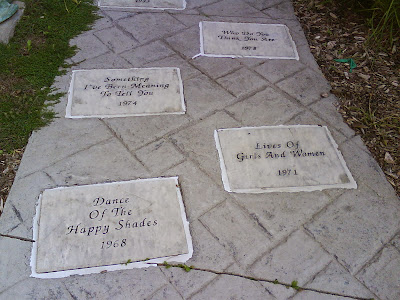 The Painted Girls by Cathy Marie Buchanan
The Painted Girls by Cathy Marie BuchananMy rating: 4 of 5 stars
The Painted Girls is a well-researched piece of historical fiction which asks: What happened to the girl who posed for Edgar Degas’s famous statue, “Little Dancer Aged 14”? There are scant details about Marie van Goethem’s life and those of her two sisters Antoinette and Charlotte. What we do know is that Marie was fired from the Opera’s ballet company for lates and absences and Antoinette was jailed for stealing 700 francs. Then they disappear into history. Their sister Charlotte, we know, became an accomplished ballerina.
Buchanan weaves these scant facts with further research on Paris of the Belle Epoque, and imagination. The narration alternates between the voices of Marie and Antoinette. By divvying up the narration, Buchanan shows how few choices lower class women had in late 19th century Paris. After awhile, I wondered, what the story would have been like without the clockwork alternation between the two sisters.
During this period of time, scientists tried to prove that character could literally be read on the faces of people, with studies showing that certain facial characteristics demonstrated “innate criminality”(304). In the end, I questioned how Degas really felt about Marie. In the novel, he was only interested in her at the point between being a girl and becoming a woman. In reality, he stopped painting her, but we don’t know why. Reviews of her statuette comment on her ugliness and how the artwork “imprints her face with detestable promise of every vice” (316). Both Marie and Antoinette are certainly at the mercy of unscrupulous men. There are very few good men in the book, in fact.
The ending of the novel, however, demonstrates the love and tenderness the author feels for her subjects. In truth, I wonder, how often such an ending happened for real people. Perhaps.
The Painted Girls is an illuminating read about this certain time and place and I enjoyed learning more about that era. I also liked reading Cathy Marie Buchanan’s website and comparing Degas’s work to her fictional characters. A great cross-pollination of media.
http://www.cathymariebuchanan.com/boo...
Other reviews:
http://www.theglobeandmail.com/arts/b...
http://www.quillandquire.com/reviews/...
http://www.thestar.com/entertainment/...
Essays on historical fiction:
http://www.newyorker.com/reporting/20...
http://ihrconference.wordpress.com/20...
View all my reviews
Image credit:
AgnosticPreachersKid. Degas. 25 Feb. 2011. Wikimedia Commons. 20 Oct. 2014. Web. 15 Sept. 2016.












































.JPG)



